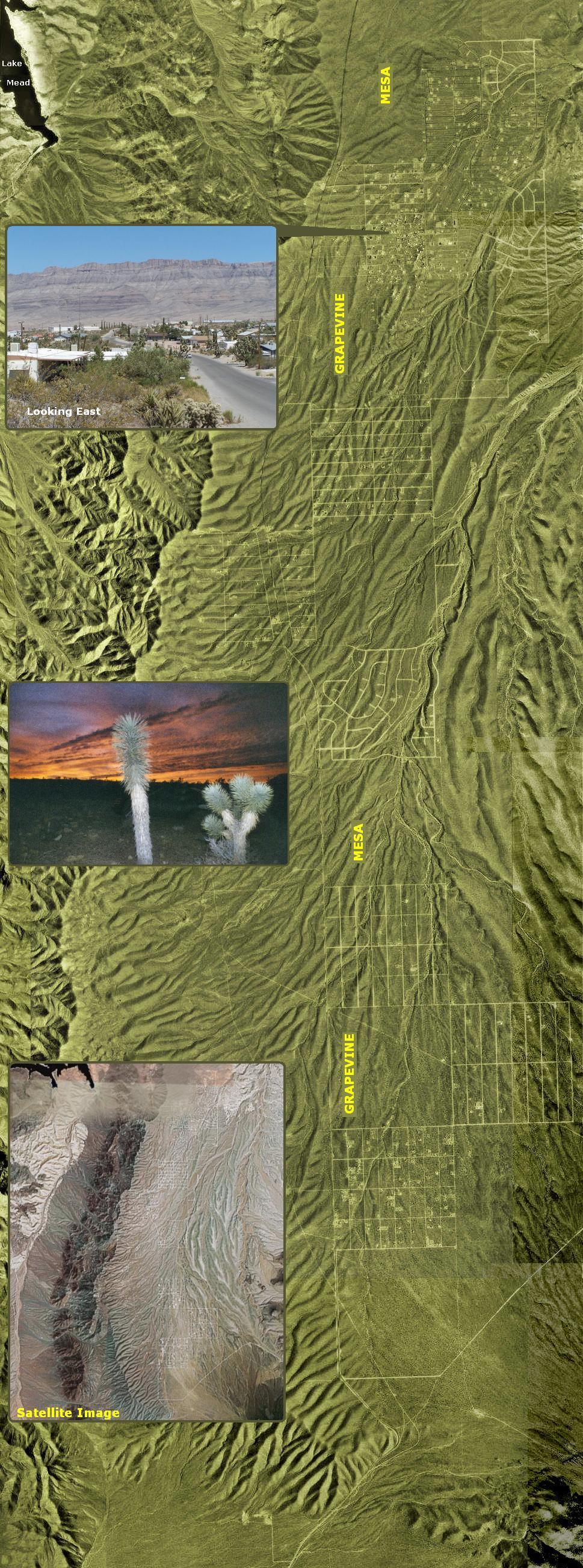MEADVIEW, Arizona 1978
If you want lots of space with clear skies - this is the place.
But it's a long ways from anywhere.
Vern worked up here a couple of time to verify records.

|
Meadview
is an unincorporated community in Mohave County, Arizona, United
States, located near Lake Mead. Despite its name, the townsite does not
overlook the lake; a ridge to the west of town separates it from the
lake. It has roughly 1500 residents. It was founded in the 1960s as
a retirement community. Meadview is located at the
point where the Grand Canyon ends and Lake Mead starts. At 3500 feet
elevation Meadview enjoys summers a little cooler than the low lying
deserts and winters a little warmer than the mountain areas.
The Ute
Trail, used for
centuries by Indians crossing the Colorado River, is in Grapevine Wash
located east of Meadview. The trail continued to the south of Grapevine
Wash with one branch continuing to the west at Cottonwood and the east
branch crossing Hualapai land to reach the Hopi.
In the
coves or on the cliffs that line the
lake, you could see the majestic desert bighorn sheep. The rams are a
sturdy animals carrying massive curved horns and boasting large harems
of ewes with their young. The wild burros, descendants of those left
behind by discouraged prospectors, drink at the water's edge, as do
cougars, bobcats and coyotes. Few nights pass without a serenade from a
family of coyotes. Badgers, cottontails, and the wily black-eared
jackrabbit, and even deer can be found within the park
boundaries. Antelope are quite rare, but are seen occasionally.
Gambel's
quail thrive in our area,
sometimes numbering the hundreds as they search for seeds under the
brush. In season, bird watchers can find over 250 species of birds
ranging from 5 kinds of humming birds to the osprey, golden eagle, and
even the bald eagle. There are 60 species of waterfowl including ducks,
herons, brown pelicans, geese, coots, terns, and the small swan like
billed grebe. Songbirds, owls, hawks, ravens and the turkey vulture are
constant visitors to the area.
At
Grapevine Springs, north of the area mapped above, you will find beds
of
the scarlet monkeyflower. The yellow wild columbine trails over the
cliffs at Columbine Falls. Throughout the rest of the area you will
find desert plants that survive our dry climate with only 6 inches of
yearly moisture. This falls as rain during July and August, and again
in February, but we have had snowfalls of 2 to 5 inches during the
winter months on rare occasions.
In the dry washes of the mesa you can spend many hours digging for gold - and you can find it! A 12-ounce nugget was found by a weekend gold seeker a few years ago and dozens of others have found smaller nuggets and flakes. From: http://www.meadview.info/ and http://www.meadviewazchamber.org/. |
